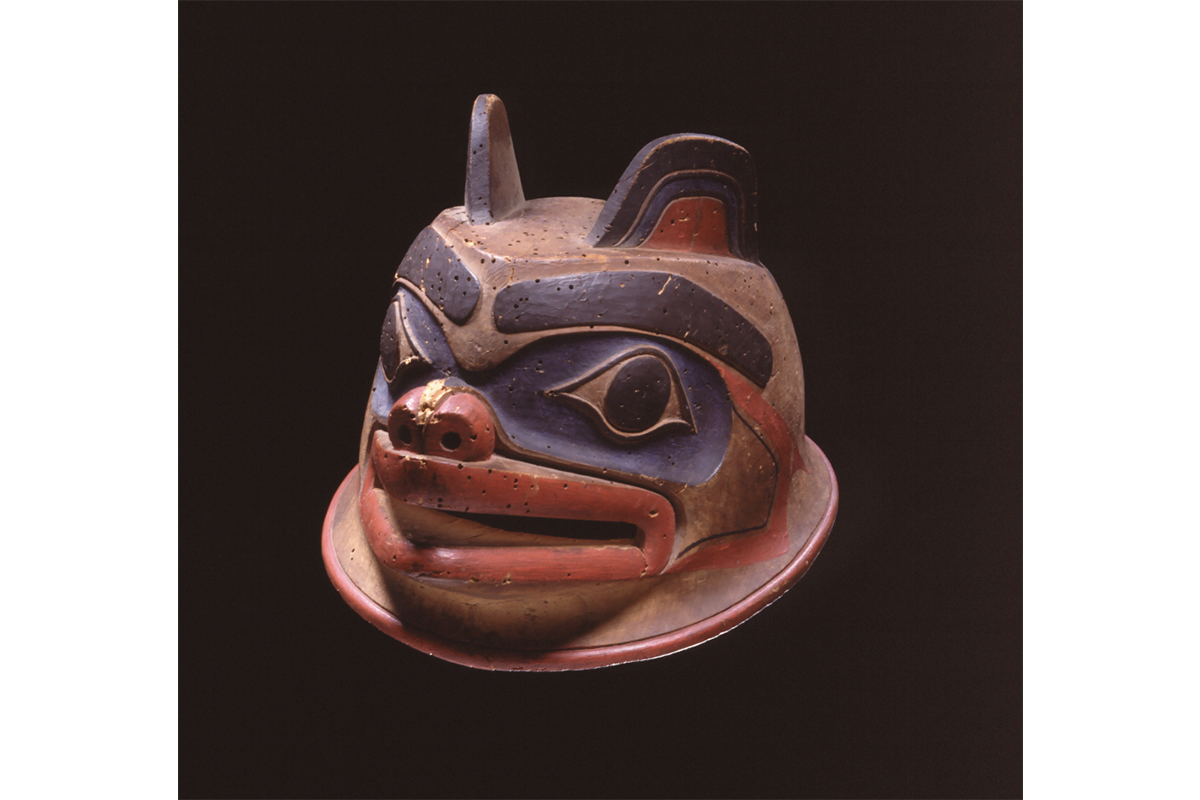Clan Headdress
Southern Alaska
ca. 1840
wood, paint
width: 12"
Inventory # CN4313-149
Sold
Provenance
Reportedly acquired by Julie Duke during the 1920's, then by descen to her son John Cribbs
On loan to Taylor Museum, Colorado Springs, CO, 1980-1998
Donald Ellis Gallery, Dundas, ON
Private collection, Toronto, ON
Published
Donald Ellis Gallery catalogue, 1999, pg. 21
Related Examples
Museum of Natural History, Smithsonian Institution, Washington, DC, Cat. No. 89037 – See: Feder, Norman. American Indian Art (shorter edition). New York: Harry N. Abrams Inc., 1973, pg. 105, pl. 109
The Brooklyn Museum, Cat. No. 05.274 - See: American Indian Art: Form and Tradition. New York: E.P. Dutton, 1972, pg. 108, pl. 152
National Museum of the American Indian, Smithsonian Institution, Cat. No. 2/9165 - See: Joseph, Robert. Listening To Our Ancestors. Washington: Smithsonian Institution, 2005, pg. 114, for a headdress identified as Tsimshian
This headpiece is clearly made in the style of 18th-century war helmets seen among the Tlingit, though it is carved thinner and is more delicate of form than most examples created by their northern neighbors. The style of sculpture suggests Kaigani Haida manufacture, particularly the shapes of the nose, eyes, and eyesockets. As relatively recent arrivals in the Prince of Wales Island area of Southeast Alaska (in approximately the early eighteenth century), the Kaigani would have had occasion to see the Tlingit helmets in action. The artist who carved this headpiece followed their general form. Unlike the carved wooden crest hats that emulate the forms of woven spruce root hats with their thin, flaring rims, this sculpture features a much abbreviated flat at its lower edge and strongly thrusting sculptural form to the crest image that extends up and forward from the base. The result is a powerful sculpture and a dramatic headpiece, created to ceremonially display the inherited crest of a family and clan lineage.
This image most likely represents a sea bear, a frequently seen image from the Haida. The characteristics of the snout, the low ears, and the painted forms of pectoral fins and the whale-like tail combine to define the sea bear image. A small square mortise can be seen between the ears atop the head, which could have supported a dorsal fin, but it is not known exactly what form such an addition may have taken.
The ears, of which about three-quarters of the pair was missing, have even restored. The surviving lower half of one ear enabled the restorer to complete both forms, following the shapes of the traditional design formalizes that embellish the surface.
Haida helmet-type headpieces are rare, and some of those in existence appear to have been made in the second half of the nineteenth century. This relatively early example exhibits a fine composition and workmanship displaying both power and gracefulness in its sculpture and painted decoration.
Steven C. Brown
Related Publications

1999
Out of print


